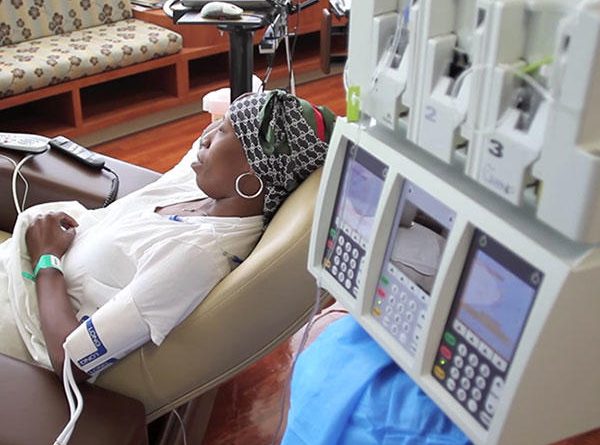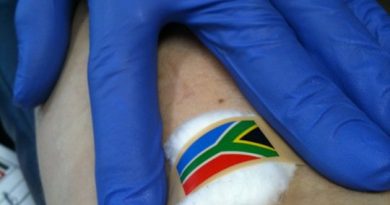Customer Satisfaction and Loyalty of Medical Scheme Members on Six-year Low
The gap between what customers expect from their medical schemes and what they perceive to receive in return for their premium and loyalty has steadily widened since 2019.
The pandemic has brought no reprieve for medical schemes, even with heightened consumer consciousness of the need for access to private, quality healthcare and the role that medical scheme membership plays in providing such access. Overall customer satisfaction of members of South Africa’s largest medical schemes has sharply declined in 2021, and some have recorded their lowest customer loyalty scores over a six-year period.
These are just some of the findings in the latest South African Customer Satisfaction Index (SA-csi) for Medical Schemes (2021) conducted by Consulta, which provides scientific insights into the overall satisfaction of members of South Africa’s largest open medical scheme providers (by membership numbers) – Bestmed, Bonitas, Discovery, Medihelp, and Momentum. GEMS is the only closed medical scheme included in the survey. Consulta polled 1950 medical scheme members during the first half of 2021. In the 2021 index, Bestmed emerges as the leader on overall customer satisfaction, with all other schemes performing on or below industry par.
Ineke Prinsloo, Head of Customer Insights at Consulta, explains: “As medical schemes enter renewal season in October when they announce benefit changes and premium increases for 2022, the findings of the latest index are significant. With customer satisfaction levels and loyalty scores at one of their lowest points in years, and with consumer price tolerance at equally low levels, there’s likely to be significant shifts of members to lower cost-benefit plans and between medical schemes as customers try to balance value, quality, necessity and affordability. What is notable, is that the customer expectation is not adjusted commensurate to the buying down in benefits. Members will look for cheaper options, but they don’t “buy down” on their expectations.
And this is where the incongruence with medical schemes increases. The impact of the pandemic on household income looms larger than ever, and as reluctant as members are to cut their medical scheme contributions, many have no other recourse. The decline in customer expectations of their medical schemes in the latest index is also a worrying trend. Lower expectations should not be misinterpreted as a positive outcome, as a decline in this metric is typically the driver of drops in all other metrics of customer satisfaction including overall quality (perceived by the customer), meeting their needs and reliability.”
Prinsloo adds that this drop in expectations could be a precursor to more significant numbers of people opting out entirely or downgrading their benefits to basic core plans in the coming months, as they don’t perceive their current use as meeting their requirements or being reliable in their time of need. There is a definite disjoin between quality and value versus price paid.
“This trend of downgrading (or opting out) is already putting the funding model of medical schemes under pressure. Medical schemes operate on the principle of ‘social solidarity’ where all members within a scheme contribute equally to a pool of funds, whether young and healthy or elderly and sickly, expecting that they will all derive equal utility value from the scheme. The latest index shows that the healthy and younger members with lower or even minimal benefit utilisation are least satisfied and loyal. Without focused intervention from medical schemes to address the drivers of customer satisfaction in this key demographic, medical schemes will soon find that the pool of funds to subsidise older, less healthy, higher utilisation members is shrinking, bringing the sustainability of the entire private healthcare funding model into question,” she adds.
South Africa’s regulatory framework for the private healthcare sector also holds significant implications for customer satisfaction, and very few consumers have a grasp of the inner workings of private healthcare funding models. Private healthcare costs from 2000 to 2012 doubled in real terms, and by 2028, they will have doubled again on the current trajectory. Medical schemes carry the bulk of these costs, and unlike the pharmaceutical industry, there is no pricing regulation on healthcare provider tariffs. In the case of prescribed minimum benefits (PMBs) – a list of conditions stipulated by the Medical Schemes Act that all medical schemes must cover at cost – it means that medical schemes have to pay these tariffs no matter what the healthcare provider charges. With South Africa facing a dire shortage of healthcare professionals, this also means that most providers charge at rates way above inflation and way above what is sustainable for medical schemes or consumers. To manage these hyperinflationary costs, medical schemes have established provider networks and capped the benefits that members can claim for on lower cost options (outside of PMBs).
“Today, medical schemes and their members are between a rock and a hard place. Members cannot rely on an overburdened and under-resourced, parlous public healthcare sector, so having some form of medical scheme benefit is a necessity, and a grudge one at that. In a bid to keep up with the healthcare hyperinflation and high utilisation of benefits, medical schemes are left with little choice but to increase costs every year to keep pace and reduce the benefits by offering less comprehensive, core options at more affordable premiums. While medical scheme contributions increase every year to keep pace, the reality is that the benefits for the members are decreasing. This means that members not only pay more for their medical scheme benefit but also have to shell out more for co-payments, out-of-pocket healthcare costs and penalty fees, especially if they do not use a network/contracted healthcare provider – this is most prevalent among more affordable, lower benefit options taken up by younger, healthier members,” says Ineke.
It is very clear from the findings of the SA-csi for Medical Schemes 2021 that providing more options for different affordability categories has proven counterproductive on perceptions of value for money and quality, which has a direct impact on loyalty and overall satisfaction scores among medical scheme members. “The importance of communication to demonstrate the value or cover, especially for members with low utilisation experience, cannot be emphasised enough. It is critical for medical schemes to focus on all members’ customer experience and satisfaction, but especially healthier members who claim less. It is vital to get benefit communications and customer experience on point, especially when it comes to claims time and complaints handling and resolution, which shows a big decline in this year’s index,” adds Ineke.
The complexity of medical scheme benefits adds tremendously to the challenge of how medical schemes demonstrate value to a customer who does not fully grasp the regulatory environment that schemes operate within. This is amplified for low or minimal utilisation members who feel aggrieved at ‘paying the same as everyone else regardless of usage.’ It is crucial that medical schemes address the growing discontent among a significant portion of their member base who are essential for the financial sustainability and viability of the schemes,” concludes Ineke.
Key take-outs from the SA-csi for Medical Schemes for 2021:
Customer Satisfaction – Overall Index
- Bestmed emerges as the leader at 76,7 and above the industry par (73,5).
- Bonitas (73,7), Discovery (73,7) and Medihelp (72,3) come in on industry par (73,5).
- GEMS (69,4) and Momentum (69,9) are below par.
- All medical schemes showed a decline in customer satisfaction scores compared with 2020.
- The least satisfied customers remain those with low to minimal benefit utilisation and who face co-payments and out-of-pocket expenses on day-to-day primary healthcare needs and chronic medication. Members on network plans (71.0) and hospital plans (72.5) are less satisfied than those on comprehensive plans (75.5).
Customer Expectations and Perceived Quality
- The gap between what customers expect from their medical scheme and what they perceive to receive has widened since 2019. This consistently increasing gap has finally resulted in lower customer expectations.
- The par score on Customer Expectations has decreased to 82,2 from 85,0 in 2020.
- Perceived Quality has declined to 79,4 from 83,0 in 2020 – dropping to its lowest index point over a five-year period.
- Bestmed comes closest to meeting Customer Expectations and Perceived Quality, with the lowest Expectation-Quality gap of -0,5 compared with the industry par score of -2.8.
- Momentum and GEMS follow, both with an Expectation-Quality gap of -1,3 and Medihelp at -1,7.
- Discovery and Bonitas have a considerable gap of -3,4 and -2,2 respectively.
Perceived Value
- Perceived value is a measure of the quality relative to the price paid. The perception of value for money is a robust predictor of future usage and company growth.
- Bestmed (74,1) takes the lead by a significant margin on the industry par (70,5) and is well ahead of all other schemes in terms of the value index.
- Bonitas (71,1), Discovery (70,5), GEMS (69,0) and Medihelp (70,6) are all on par, while Momentum (67,0) is below par.
- All schemes have declined on this score compared with 2020, with Medihelp showing the largest decline of more than four index points.
- A persistent theme in each index is that members feel that they are paying too much for a benefit that isn’t effectively tailored to their needs. This is driven by the fact that many members do not understand the specific scope of the cover in their benefit plan, which translates into a sentiment that medical schemes are not keeping their promises.
Complaints Incidence and Handling
- Except for Bestmed, all medical schemes have consistently recorded a rise in complaints over five years. Discovery, GEMS and Momentum all experienced significant increases in complaint incidence during 2021. This negative trend is further compounded by highly inconsistent complaint handling on an industry level. The 2021 complaints incidence par score for the industry is at an alarming 20.8%. The international best practice score for complaint incidence is below 10%. The industry average score for complaint handling is 43,7. The most prevalent complaints relate to slow pay-outs, declined benefits or total non-payment.
- Bestmed has the lowest complaint incidence score of 11.6% (closest to international best practice) and complaint handling score of 47,6.
- Medihelp follows with 14,6% on Complaint Incidence and 45,8 on Complaint Handling.
- On Complaint Incidence: Bonitas (22,3%), Discovery (21.0%), GEMS (25,1%) and Momentum (26,1%) have high levels of complaints incidence, which has increased significantly compared with 2020 (except for Bonitas, which is slightly down).
- Momentum Health has the highest number of complaints (26.1%), although they also have the highest complaints handling score (53.6).
- Bonitas (42,6) and Discovery (42,3) are lower than industry par (43,7) when it comes to Complaint Handling, while GEMS (45,8) is slightly above par. However, given the high complaint incidence for these schemes, this should be a red flag on this crucial metric as it means a significant proportion of complaints are not resolved, which has a marked negative impact on customer satisfaction scores.
Customer Loyalty
- Bestmed has the most loyal customers at 68,9% and above industry par of 65,7%, although slightly down from its 2020 score of 70,6%.
- Discovery follows at 66,4% with a decline from its 2020 score of 69,9%.
- Bonitas (64,3%) and Medihelp (64,8%) also show a decline from their 2020 scores, while GEMS (61,1%) and Momentum (61,6%) have increased marginally, albeit both still below industry par on Loyalty.
Net Promoter Score
- Net Promoter Score measures the likelihood of a person recommending a brand. Overall, the industry par on NPS of 11,8% has declined significantly from its 22,1% high in 2020 to one of its lowest points in five years.
- Bestmed has the highest Net Promoter Score (NPS) at 28,5%, which is well above the industry par (11,8%) and well ahead of all other schemes. Bestmed customers are active brand promoters to others, with 52% of customers recommending the brand. Bestmed also has the lowest number of detractors at 24%.
- Bonitas follows with an NPS of 20,2%, also well above the industry par, with 47% of customers willingly endorsing it to others.
- Medihelp has an NPS of 11%, a significant decline from its NPS score in 2020 of 21,4%. Only 40% of customers actively promote the brand, and 29% are detractors.
- Discovery follows with an NPS of 9,7%, its lowest NPS score in the last five years and a significant drop off from its 2020 score of 21,4%. Only 40% of customers actively promote the brand, while 30% are detractors.
- Momentum has an NPS of 1,2%, which is a considerable decline on its 2020 NPS score of 13,3%, while 35% of customers are detractors. GEMS crashes down to -9,2%, with 41% of customers as detractors of the brand.
Treating Customers Fairly (TCF)
- The degree to which customers feel they are being treated fairly by their medical scheme is highest with Bestmed (80,6) and Bonitas (79,3) – both above industry average of 76,4.
- Medihelp (76,4) and Discovery (75,9) are on par.
- GEMS (74,0) and Momentum (72,4) are lower than the rest of the industry.
- All medical schemes have declined on TCF scores compared with 2020.
As a strategic tool for gauging individual firms’ competitiveness and predicting future profitability, an organisation’s customer satisfaction performance, as measured by the SA-csi methodology, provides a predictive indication of how well the firm will perform in terms of future revenue and earnings growth. Supported by both the scientific and practitioner community, the SA-csi is the first independent, comprehensive national customer satisfaction index with international comparability in South Africa. It has collected data from more than 400 000 consumers since its inception in 2012. The SA-csi forms part of a global network of research groups, quality associations, and universities that have adopted the American Customer Satisfaction Index (ACSI) methodology via its Global CSISM program.




